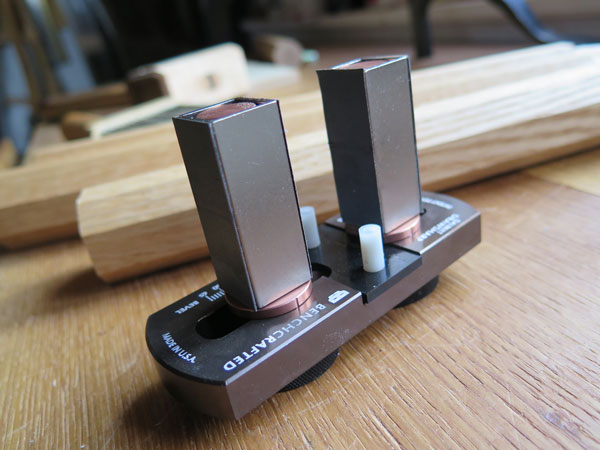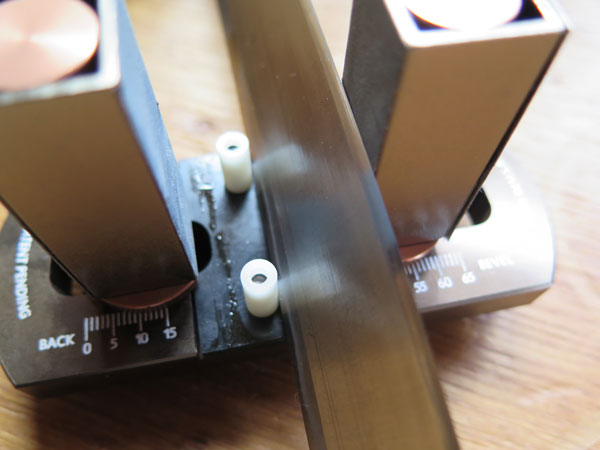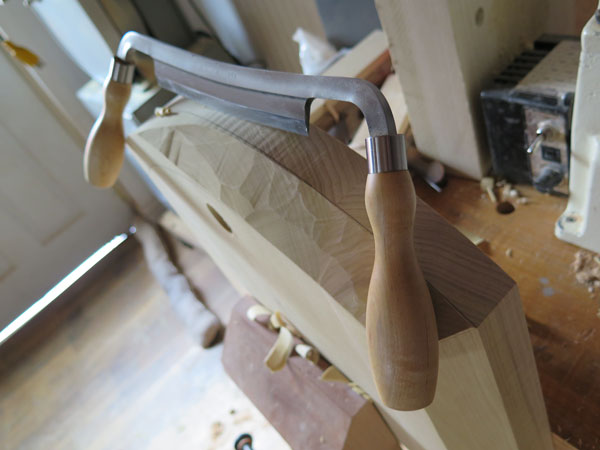Galbert Drawsharp in Use
Before you read beyond the first few sentences of this blog entry, there a couple things you should know:
- I have no problems sharpening a drawknife. Never have (except that time in the 1990s where I ended in the ER for seven stitches). One of the first tools I inherited from my grandfather was his old drawknife, which I still use.
- I have just finished editing a chairmaking book by Peter Galbert that my company is publishing. I’m a huge fan of Peter’s work, his writing and the tools he makes.
When Galbert’s Drawsharp was released in October 2013, I didn’t jump to buy one. I didn’t really need any help sharpening my drawknife, so it seemed like a jig that would sit around collecting dust (like those bench cookies).
But something – I don’t know exactly what – made me decide to plunk down the $85 and purchase the Drawsharp, which is made by Benchcrafted. I’ve been using it during the construction of a couple chairs and am quite impressed.
The beauty of the jig is that it creates a consistent and sharp edge across the entire length of the drawknife. That is a challenge for beginning sharpeners to do. They end up making some parts sharper than others. And they change the geometry of the edge in places because there is about four times as much edge to sharpen as there is on a No. 5 bench plane.
So the drawknife cuts inconsistently in different areas of the edge.
After years of tending to my grandfather’s knife I can get a very nice edge. But it’s still not as consistent as the one I get on the Drawsharp. What’s equally remarkable is how fast the jig works. If we’re being honest, I’d tell you it takes me about 15 to 20 minutes hone my drawknife freehand. With the jig, it takes about 3 minutes. Wow.
The jig itself is clever and well-made (in the USA, too). The instructions are brief (one sheet of paper) and if you learn better by watching video you can check out the Benchcrafted site. Basically, the jig slides like a monorail along the back of the knife and sharpens the bevel and the back of the knife with diamond abrasive and then #600-grit sandpaper.
The only downside to the jig, as far as I can tell, is that it might be troublesome to use with drawknives that have been abused. For example, someone used my grandfather’s knife like a splitting froe and hit the spine of the knife with a hammer. So its spine is dinged and misshapened. I spent about 30 minutes filing the spine, but it still wasn’t satisfactorily smooth to run in the Drawsharp. I might have to borrow a friend’s belt sander to make it right.
That’s why these photos show me sharpening a Lie-Nielsen drawknife (which is crazy nice).
Good jigs add consistency and (in many cases) speed to a process. It’s up to us to decide if a particular jig is worth owning for our own work and the tools we use. I love chairmaking a lot more than I love sharpening, so the Drawsharp has earned its place in my tool chest.
— Christopher Schwarz




No comments:
Post a Comment